|
November 20


Standard Brewery is Auctioned
November 20, 1952 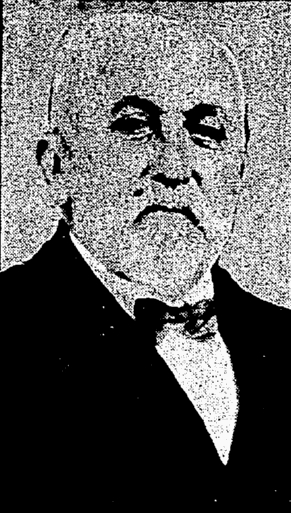 German Born Charles Wirth (1851-1936) came to New Orleans in 1864 and in 1916 developed Wirth Place -- a two-block
street between Freret and Magnolia Streets near Nashville Avenue. He also owned Wirth's Grocery Store on Magazine Street.
He later became the president and major stockholder of the Standard Brewing Company, a member of the city council, and president
of the German Protestant Orphan Asylum for 18 years. Wirthbru
Beer was "created for New Orleans and the South", according to a two page advertisement announcing the introduction
of Wirthbru on December 23, 1934 in the Times-Picayune. Produced in the Standard Brewing Company's 525 South Johnson Street
brewery which had "The finest, most modern brewhouse equipment", Wirthbru was "The finest glass of beer you
ever tasted" touted the ad. At that time, Guy L. Dean
was Standard's president and general manager. Christian Jetter was he brewmaster. "Weigelstyle" (on
the label) apparently refers to the Weigelwerk equipment used in the brewery which was, in fact, cutting edge in its day,
and allowed for quality control to produce a consistently good product. In August 1947, American Brewing Company, makers of Regal Beer, leased the Standard/Wirthbru facilities and
appointed J. Michael Schorr, its brewmaster, to produce Regal Beer for an outside market while retaining American's original
brewery to produce Regal for the local market. American discontinued all Wirthbru beer from the Standard facility.
American Brewing Company was located in the 300 block of Bourbon
street. It was demolished in 1964 and replaced with the Royal Sonesta Hotel. The Standard Brewery, located adjacent
to what is now the LSU Interim Hospital, was auctioned on November 20, 1952. Its location (near the old Dixie Brewery
and within walking distance from the Falstaff brewery) is now a parking lot.
Ernest "Doc" Paulin was born in Wallace, Louisiana, in St. John the Baptist Parish on June 22, 1907 to a Creole French speaking family. Paulin's father played the accordion. Edgar Peters, his uncle, was a trombonist.
Paulin relocated to nearby New Orleans in his youth. He was active on the city's music scene since the 1920s and continued
performing marching in long parades into the 1990s. His non-Union band gave many young musicians their start in playing professionally. Paulin
had 13 children, six of whom played music professionally, starting in their father's band. His sons continue to have one of
the city's better known brass bands, the Paulin Brothers Band. Son Rickey Paulin, a clarinet player, was displaced to Houston by Hurricane Katrina in 2005. Paulin's band was featured in Always for Pleasure, an award-winning documentary about New Orleans culture. Paulin recorded in the early 1960s with Emile Barnes on Icon Records, and in 1980
his brass band made an LP released onFolkways. He also performs
on the CD by his sons' 1996 Paul Brothers Jazz Band The Tradition Continues. Paulin
died in suburban Marrero on November 20, 2007 at the age of 100. (Wiki)
On November 20, 1988, the Saints scored their biggest win in team history in a 42-0 win over the Denver
Broncos. The win clinched the Saints' 2nd consecutive winning season.
On November 20, 1882, William J. Behan (1840-1928) became the 41st mayor
of New Orleans, a position he held until April 28, 1884. During the Civil War, Behan had served the Confederate States
in the Washington Artillery where he rose in rank to major. He was also a Captain of the
Mistick Krewe of Comus.
The beautiful altar of St.
Mary's Assumption Church was carved by Romeo Celli, an Italian sculptor,
wooodcarver, painter, and decorator who was born in Rome on November 20, 1877. Educated at Colegio
Rosi, L'Apollinare di Roma, and Accademia di Belle Arti in Rome, he served in the Italian navy, ca. 1895-1904, Celli
arrived in New Orleans in April, 1904. He married, Mamie Tedesco of New Orleans, they had two children: Dr. Ernest Celli
and Mrs. E. J. Rolling. He is noted for his carved plaques, particularly the portraits of Woodrow Wilson, Benito Mussolini,
and New Orleans mayor Martin Behrman. Celli died in New Orleans on June 24, 1935. Source: http://lahistory.org/site20.php
Earling Carothers "Jim" Garrison, born in Denison, Iowa on November
20, 1921, was the District Attorney of New Orleans from 1962 to 1973. He is best known for his
investigations into the assassination of President John F. Kennedy and his unsuccessful prosecution of businessman
Clay Shaw. He died on October 21, 1992.
Jazz clarinetist and saxophonist Achille Joseph Baquet, born in New Orleans on November 15, 1885,
was an early musician on the New Orleans jazz scene. His father, Theogene Baquet, led the Excelsior Brass Band. His
brothers, Harold and George, were both musicians. He learned clarinet from Luis Tio, and played with the Original Dixieland
Jazz Band, Papa Jack Laine's Reliance Brass Band, and the Happy Schilling Dance Orchestra. Baquet's credits as a composer
include "Why Cry Blues", written with Jimmy Durante. He is also thought to have co-written "Livery Stable Blues"
with Yellow Nunez. He died on November 20, 1956 (or 1955).
Baseball's Forgotten Man
New Orleans'
Own Johnny Wright
Signs Contract as First Black Pitcher in Major League Baseball
November 20, 1945 On March 5, 1946, on page 9, a two paragraph Associated Press article appeared on the Times-Picyaune
sports page. It read: 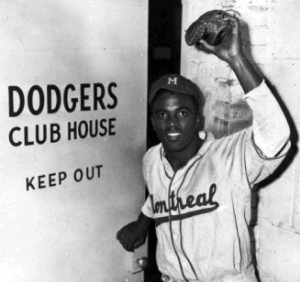 Robinson, Wright Have First Spring Workouts Robinson, Wright Have First Spring Workouts
Sanford, Fla., March 4. -- Baseball
broke a precedent of long standing today when Shortstop Jackie Robinson and Pitcher John Wright, two Negro athletes, reported
for spring training with the Montreal Royals, Brooklyn's farm club in the International League. Before
an uninterested gathering of seven spectators, Robinson and Wright went through the routine practice motions in a drill that
failed to create as much excitement as a daily battle between the "Blues" and the "Greens" at Rickey University."
Robinson went on to earn great fame. Wright has been mostly forgotten. And the
introduction of black players to major league baseball was anything but "routine" (the word used to describe their
first practice together in the above article). Born in New Orleans on November 28, 1916, John Richard
"Johnny" Wright graduated from McDonough 35 in 1935 and pitched for the New Orleans Zulus at age 17 in 1936.
The Zulus were a local professional team which provided entertainment with high-jinks which have been compared to the Harlem
Globe Trotters. In 1937 played professionally in the Negro League for the Newark Eagles, the Atlanta Black Crackers (1938),
the Pittsburgh Crawfords (1938), Toledo/Indianapolis Crawfords (1939-40) and twice with the Homestead Grays (1941-43, 1945).
With the Grays, Wright pitched in the Negro Leagues World Series of 1942, '43, and '45. In 1943. Wright had a 25-4 record
before entering the Navy during World War II where he played on the the Great Lakes Naval Station and the Floyd Bennett Air
Field teams. On October 23, 1945, president and general manager of the Brooklyn Dodgers, Branch Rickey
made the announcement of Jackie Robinson's signing and on January 29, 1946 he announced the signing of Wright, making him
the second officially recognized African-American to sign a contract with major league baseball as well as the first black
pitcher. Wright's contract had actually been signed on November 20, 1945, less than a month after Robinson signed.
Wright was 27 years old, Robinson was 28. Bill Mardo of the
Cleveland Call and Post wrote from the Dodgers spring training camp in Daytona Beach, “Actually Wright stands a far
better chance than Robinson to make the jump into big league baseball. The Dodgers are terribly low on good pitchers,
and by gosh that Wright is one helluva moundsman."
In
Florida, Robinson and Wright were allowed to stay with the white players at the team hotel -- They were instead housed with
families in the African-American community. The Sanford police chief threatened to cancel games if Robinson and Wright
did not cease training activities there. In Jacksonville, the stadium was padlocked without warning on game day, by order
of the city's Parks and Public Property director. Also in Jacksonville, Wright and Robinson were prohibited from playing after
the Playground and Recreation Board noted that the rules barred “mixed contestants in athletic contests” at their
facilities. In DeLand, a scheduled day game was called off, reportedly because of faulty electrical lighting. Wright
was on the roster on March 17, 1946, when Robinson started at shortstop for the Royals in an exhibition game against their
parent club the Dodgers, the first step in breaking baseball's color barrier. While Robinso was able to channel any
adversity into a drive to achieve excellence, Wright began faltering. In his first appearance, against Syracuse, Wright
entered in relief. He gave up 4 runs and 5 hits over 3.1 innings. The next time on the mound Wright pitched in Baltimore,
the southern-most city in the International League, and a hostile environment for black players. He entered in the sixth
inning behind by five. He retired the side and finished the game without giving up a hit. In general, however, during
his six weeks with the club, he was used sporadically and often suffered from control problems. On May 14, he was demoted
to the Class-C Trois Rivieres (Quebec) Royals of the Canadian-American League. The Dodgers immediately replaced Wright
on the Montreal roster with Roy Partlow, another black pitcher. Wright went 12-8 with Trois Rivieres, plus winning
the deciding game of the championship series. At the end of the season, Wright barnstormed with Robinson's "All-Star"
squad. Wright rejoined the Grays for 1947, making the All-Star team and winning eight games. He retired after
the 1948 season, moved back home, and spent the rest of his working life at the National Gypsum Company. "I'm sure
most of his co-workers at the gypsum plant never even knew he was a ballplayer," said Walter Wright (no relation),
president of the Old-Timers Club who played and followed baseball for most of his 84 years. Wilmer Fields, a teammate with
the Grays, said: "John never talked much about his experience with the Dodgers. He was a happy-go-lucky person who
was in the wrong place at the wrong time." Jackie Robinson's temperament was better suited to handle the cruelties
and indignities suffered by the first black men to play in the big leagues. He wrote in his autobiography, "Shortly
after Branch Rickey had signed me for Montreal, he had signed John Wright, a black pitcher, for the farm club. Johnny was
a good pitcher, but I feel he didn't have the right kind of temperament to make it with the International League in those
days. He couldn't withstand the pressure of taking insult after insult without being able to retaliate. It affected his
pitching that he had to keep his temper under control all the time. Later I was very sad because he didn't make the Montreal
team. Johnny Wright died in Jackson, Mississippi on May 17, 1990 at the age of 72.
Margaret "Our Margaret"
Came to Our City on November 20. 1835 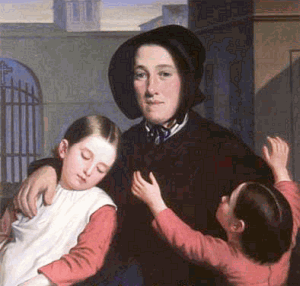 On November 20, 1835 a young Irish-born woman, her husband, and young daughter arrived in New Orleans on the ship Hyperion.
They had left their home in Baltimore because they were advised that his health might improve in the southern climate.
He died shortly thereafter and, within months of his death, the beloved baby girl also died. Margaret Haughery was a
23 year-old illiterate, uneducated, penniless, childless widow in a city she barely knew. Her life had been touched
by great loss before. At the age of nine her parents died. She is often quoted as saying, after losing her baby, 'My
God! Thou hast broken every tie. Thou hast stripped me of all. Again I am all alone' She began working in the laundry of the St. Charles Hotel and was touched by the plight of orphan children
she could see on the streets through the window while she ironed all day, everyday. She vowed to help the Sisters of
Charity in their efforts to care them. She not only applied her meager savings and sparse spare-time to the care of
the children, but also collected clothing and furniture and begged for food and cash donations from nearby businesses and
restaurants. In 1836 Margaret moved in with the nuns at Poydras Asylum and purchased and cared for two cows who provided
milk for the children. She went into the streets, with a cart, to sell and deliver any milk not needed by the
children. Her industriousness and hard work resulted in a successful commercial dairy which eventually consisted of
about 40 cows. In 1841, she moved with the nuns to open the New Orleans Female Asylum on New Levee Street, now Convention
Center Boulevard. (Photo on the left -- circa 1842 Portrait of Margaret with Two Orphans by Jaques Amans, New Orleans)
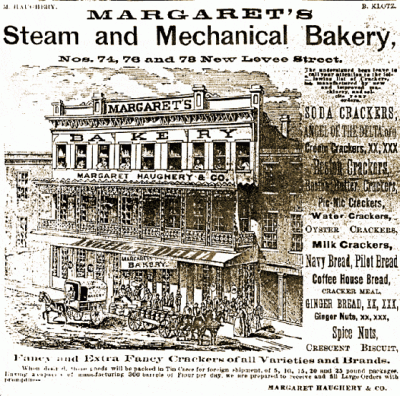 In 1880, Margaret acquired a bakery at 70 through 78 New Levee Street which grew into one of the largest in the city.
As before, the first products went to the orphans, the rest was sold. Working in partnership with the Sisters of Charity,
Margaret fed not only orphans but the city's needy adults. She generously supported St. Theresa's Asylum, St. Elizabeth's
Asylum, St. Vincent's Infant Asylum and other similar institutions. It has been estimated that, while living, she donated
an estimated $600,000 to charitable endeavors. In addition, she personally cared for yellow fever victims, widows, homeless
men, pregnant teenagers, Confederate Veterans, and anyone who sought her help. Upon her death, on February 9, 1882, she bequeathed most of her $50,000 estate to the poor of New Orleans.
Participants in her funeral ceremonies included Archbishop Napoléon-Joseph Perché, 13 priests, Mayor Benjamin
Flanders, and Lieutenant Governors George L. Walton and W.A. Robertson.
Thousands of people, including prominent politicians, businessmen, and members of the clergy attended her funeral. As did
the orphans and their caregivers. The people of New Orleans lined the streets to mourn the passing of her remains to
St. Patrick's Church and St. Louis Cemetery No. 2 (her remains were later relocated to St. Louis No. 3).
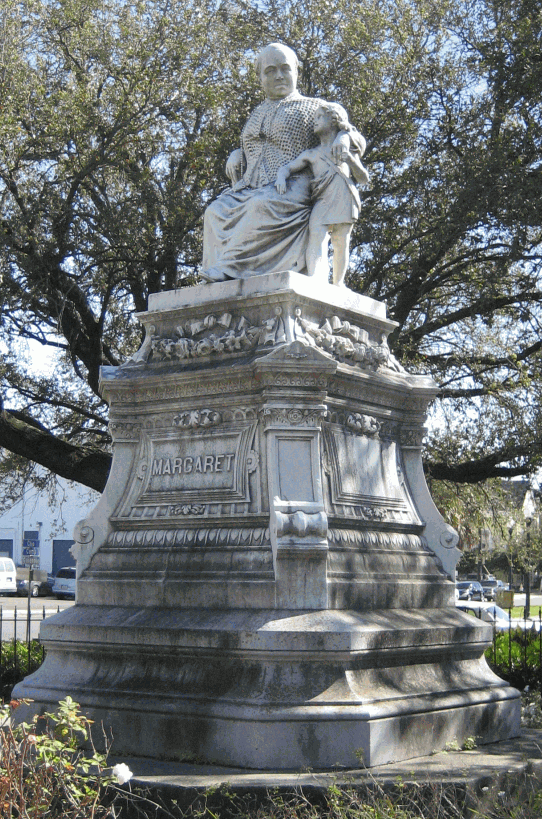 She became known, during her lifetime, as “The Bread Woman of New Orleans". A century and a quarter later,
we know her as simply "Margaret" and are reminded of her life devoted to children by the statue at Margaret Park
in front of the old orphanage. The story of the statue attests to how beloved she was by so many. Almost immediately after
her death an executive committee was formed and headed by George Horter to raise funds for a memorial. Rich and poor
contributed and the $6000 needed to make it a reality was soon collected. Alexander Doyle, who was working on the Robert
E. Lee statue for Lee Circle, was commissioned to design Margaret's statue. His model was sent to Italy, where the monument
was carved in fine Carrara marble. In keeping with Margaret's frugal personal lifestyle, Doyle portrayed her sitting in her
favorite plain wooden chair, clothed in a simple dress and shawl. Her left arm is draped lovingly around a young boy
whose face reflects his love for her. Those who knew her, were astounded by its likeness. The statue was shipped from Carrara, Italy on April 24, 1884. In May, the city pondered its fate as
the ship Castalla, which was thought to have transported it, ran aground off the coast and was forced to throw over part of
its cargo to become afloat again. The statue was more likely transported on the steamer Italia, from Livorno on May
6 of that year. Two sections of the seven-foor pedestal had already arrived in New Orleans.
The monument was placed on a triangular plot of land (adjacent to the Louise Home for girls) which had been
a dumping ground but was cleaned up and planted with flowers and grass. The small park is surrounded by Calliope, Camp,
Erato and Pryatania streets and is named for her -- Margaret Place. At its dedication, on July 9, 1884, children from
every orphanage attended, Governor Francis T. Nicholls was the principal speaker, and notables and humble people from throughout
town gathered, as did Mayor J. Valsin Guillotte and members of the city council. The statue is often said to be the first dedicated in the memory of a woman built in the United States.
It is, in fact the first built by popular subscription. A public monument (built with tax dollars ) honoring Hannah Duston,
who fought an Indian attack in 1697 was erected in Haverhill, Massachusetts in 1861. A second monument to Duston was
erected in 1874 on the island in Boscawen, New Hampshire where she killed. But Margaret's statue remains the first
known to have been erected in honor of a beloved woman, funded freely out of the pockets of those who returned their love
for her. Thirteen years after her death, on October 8, 1895,
Margaret's memory was still dear to New Orleanians -- a fireworks show titled "Last Days of Pompeii" was held at
Athletic Park (Canal at St. Patrick streets) which included "a fine portrait of the Margaret Statue in lines of colored
fire" -- 30 feet by 25 feet in size. Eighteen years after her death, from May 24 to May 26, an orphan fund raiser offered
a prize for the best recreation of the Margaret Statue created with flowers and flags. In August 1912 vandals broke the index finger from the right hand of the statue, creating public outrage.
But it was not until June 1925 that the Committee of Public Property, headed by John Klorer, authorized stonecutter W. E.
Martel to repair the damage. That same year the Margaret Park Commission had requested the repair and were planning to beautify
the park, again. When Albert Sidney Conner, the boy who had posed for the statue as a three-year old, died on November
30, 1913 at the age of 31, the news of his passing was noted. In
1936 the statue was cleaned after a campaign was held to raise funds. During the late 1960s a public school was named for
Margaret. It served pregnant teenagers who were not allowed to attend their home schools. When the Pontchartrain Expressway
was built, an on-ramp hid Margaret Place from much public view. From the early 1960s through the mid 1970s, Margaret
Day was observed at the park on the anniversary of her death. By the mid 70s, the neighborhood had fallen into deep
disrepair and the statue was surrounded by a tall fence topped with barbed wire. In 1988 the Margaret Place Restoration
Project, in partnership with the Parkway and Parks Commission raised funds for its restoration. In the 1990s, following
removal of the Camp Street expressway ramp, the Parkway Partners along with the Coliseum Square Association refurbished
the statue. Other cities can claim women recognized immediately
by their first names only -- there's Liza (with a Z), Cher (without Sonny), Madonna, and many more. We have Margaret,
the kind lady who overcame heartbreak to devote her life to uplifting the lives of men, women, teenagers, and children.
Through the years she has been known as the “Mother of Orphans,” "Saint Margaret", “The
Bread Woman of New Orleans", and “Our Margaret”. It speaks well of us that we remember her, still,
so many years after her passing. Related reading:
|




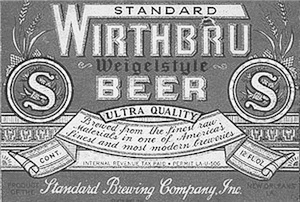
 German Born Charles Wirth (1851-1936) came to New Orleans in 1864 and in 1916 developed Wirth Place -- a two-block
street between Freret and Magnolia Streets near Nashville Avenue. He also owned Wirth's Grocery Store on Magazine Street.
He later became the president and major stockholder of the Standard Brewing Company, a member of the city council, and president
of the German Protestant Orphan Asylum for 18 years.
German Born Charles Wirth (1851-1936) came to New Orleans in 1864 and in 1916 developed Wirth Place -- a two-block
street between Freret and Magnolia Streets near Nashville Avenue. He also owned Wirth's Grocery Store on Magazine Street.
He later became the president and major stockholder of the Standard Brewing Company, a member of the city council, and president
of the German Protestant Orphan Asylum for 18 years. 
 Robinson, Wright Have First Spring Workouts
Robinson, Wright Have First Spring Workouts On November 20, 1835 a young Irish-born woman, her husband, and young daughter arrived in New Orleans on the ship Hyperion.
They had left their home in Baltimore because they were advised that his health might improve in the southern climate.
He died shortly thereafter and, within months of his death, the beloved baby girl also died. Margaret Haughery was a
23 year-old illiterate, uneducated, penniless, childless widow in a city she barely knew. Her life had been touched
by great loss before. At the age of nine her parents died. She is often quoted as saying, after losing her baby, 'My
God! Thou hast broken every tie. Thou hast stripped me of all. Again I am all alone'
On November 20, 1835 a young Irish-born woman, her husband, and young daughter arrived in New Orleans on the ship Hyperion.
They had left their home in Baltimore because they were advised that his health might improve in the southern climate.
He died shortly thereafter and, within months of his death, the beloved baby girl also died. Margaret Haughery was a
23 year-old illiterate, uneducated, penniless, childless widow in a city she barely knew. Her life had been touched
by great loss before. At the age of nine her parents died. She is often quoted as saying, after losing her baby, 'My
God! Thou hast broken every tie. Thou hast stripped me of all. Again I am all alone'  In 1880, Margaret acquired a bakery at 70 through 78 New Levee Street which grew into one of the largest in the city.
As before, the first products went to the orphans, the rest was sold. Working in partnership with the Sisters of Charity,
Margaret fed not only orphans but the city's needy adults. She generously supported St. Theresa's Asylum, St. Elizabeth's
Asylum, St. Vincent's Infant Asylum and other similar institutions. It has been estimated that, while living, she donated
an estimated $600,000 to charitable endeavors. In addition, she personally cared for yellow fever victims, widows, homeless
men, pregnant teenagers, Confederate Veterans, and anyone who sought her help.
In 1880, Margaret acquired a bakery at 70 through 78 New Levee Street which grew into one of the largest in the city.
As before, the first products went to the orphans, the rest was sold. Working in partnership with the Sisters of Charity,
Margaret fed not only orphans but the city's needy adults. She generously supported St. Theresa's Asylum, St. Elizabeth's
Asylum, St. Vincent's Infant Asylum and other similar institutions. It has been estimated that, while living, she donated
an estimated $600,000 to charitable endeavors. In addition, she personally cared for yellow fever victims, widows, homeless
men, pregnant teenagers, Confederate Veterans, and anyone who sought her help.  She became known, during her lifetime, as “The Bread Woman of New Orleans". A century and a quarter later,
we know her as simply "Margaret" and are reminded of her life devoted to children by the statue at Margaret Park
in front of the old orphanage. The story of the statue attests to how beloved she was by so many. Almost immediately after
her death an executive committee was formed and headed by George Horter to raise funds for a memorial. Rich and poor
contributed and the $6000 needed to make it a reality was soon collected. Alexander Doyle, who was working on the Robert
E. Lee statue for Lee Circle, was commissioned to design Margaret's statue. His model was sent to Italy, where the monument
was carved in fine Carrara marble. In keeping with Margaret's frugal personal lifestyle, Doyle portrayed her sitting in her
favorite plain wooden chair, clothed in a simple dress and shawl. Her left arm is draped lovingly around a young boy
whose face reflects his love for her. Those who knew her, were astounded by its likeness.
She became known, during her lifetime, as “The Bread Woman of New Orleans". A century and a quarter later,
we know her as simply "Margaret" and are reminded of her life devoted to children by the statue at Margaret Park
in front of the old orphanage. The story of the statue attests to how beloved she was by so many. Almost immediately after
her death an executive committee was formed and headed by George Horter to raise funds for a memorial. Rich and poor
contributed and the $6000 needed to make it a reality was soon collected. Alexander Doyle, who was working on the Robert
E. Lee statue for Lee Circle, was commissioned to design Margaret's statue. His model was sent to Italy, where the monument
was carved in fine Carrara marble. In keeping with Margaret's frugal personal lifestyle, Doyle portrayed her sitting in her
favorite plain wooden chair, clothed in a simple dress and shawl. Her left arm is draped lovingly around a young boy
whose face reflects his love for her. Those who knew her, were astounded by its likeness. 
